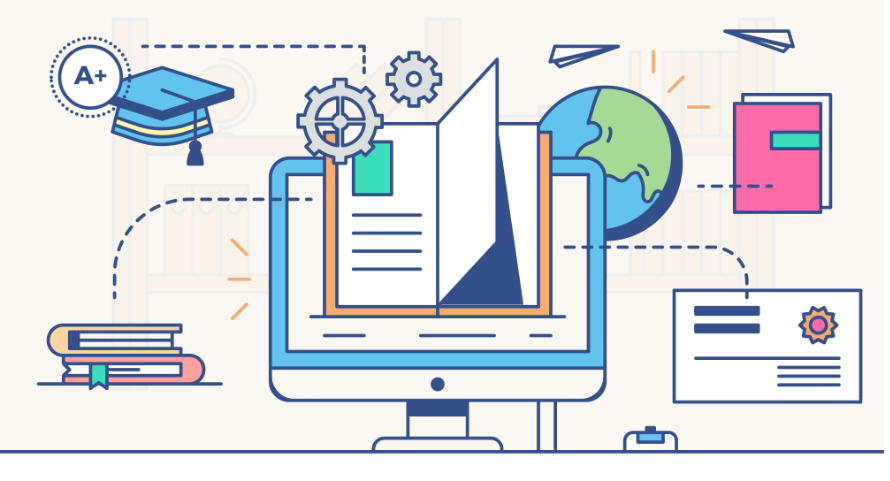Canvas Singapore: A All-In-One Platform for Today’s Education
The Ultimate Guide to Choosing the Right Learning Management System
Picking an appropriate Knowing Monitoring System (LMS) is a crucial decision that can significantly influence academic performance and general organizational objectives. The nuances of these considerations increase important inquiries that merit expedition, particularly as the landscape of electronic discovering continues to advance.
Comprehending Learning Administration Systems
In the context of modern-day education and training, an Understanding Management System (LMS) works as an important tool for providing, monitoring, and handling educational material. An LMS promotes the organization of academic sources, allowing institutions and companies to create a central hub for finding out materials. This system supports numerous learning techniques, consisting of online programs, combined learning, and standard class settings.
LMS systems are designed to improve the understanding experience by giving a structured atmosphere where students can access web content at their convenience. They commonly consist of functions such as assessments, progression monitoring, and reporting tools, which assist instructors monitor student efficiency and engagement. Additionally, LMSs can be customized to meet the particular needs of various students and organizations, permitting for customized instructional experiences.
The assimilation of an LMS into instructional setups additionally promotes cooperation amongst students and teachers, cultivating a feeling of area via conversation online forums and team jobs. As companies increasingly identify the importance of continuous knowing and advancement, the role of LMSs in assisting in efficient training services continues to grow, placing them as important properties in the instructional landscape.
Trick Functions to Think About
When choosing a Knowing Management System (LMS), several key attributes necessitate cautious consideration to ensure the system straightens with academic objectives. Primarily, user-friendliness is essential; a straightforward user interface assists in ease of navigating for both learners and managers.

Combination with existing tools is an additional significant facet; the LMS ought to seamlessly connect with devices like CRM systems, video conferencing systems, and content databases. canvas singapore. Mobile compatibility is increasingly vital, as learners usually like accessibility to resources on-the-go
In addition, customization choices permit institutions to tailor the LMS to their certain branding and pedagogical needs. Finally, take into consideration the system's scalability, ensuring it can fit future development and changes in individual need. Prioritizing these essential attributes will help in picking an LMS that effectively boosts the learning experience and fulfills institutional goals.
Prices Versions and Budgeting
Budgeting for a Knowing Administration System (LMS) calls for an extensive understanding of numerous rates models to make certain a lasting i was reading this financial investment. Organizations should examine their details demands and lasting objectives while considering the financial ramifications of each LMS choice.

Along with the base rates, companies need to additionally take into consideration possible extra expenses such as application, maintenance, and support services. It is vital to examine the total price of possession over the LMS's lifecycle, including potential upgrades or additional attributes that might be needed as the company grows. By carefully assessing these rates designs and associated costs, companies can make educated decisions that straighten with their monetary restraints and instructional goals.
Assessing User Experience
Analyzing the efficiency of a Learning Management System (LMS) goes past monetary considerations; customer experience plays a crucial role in the general success of the platform. A well-designed individual interface can considerably enhance interaction and retention, making it vital to evaluate exactly how intuitive the system is for both administrators and learners.
When analyzing customer experience, take into consideration navigational simplicity, ease of access attributes, and the responsiveness of the platform throughout various tools. An LMS should offer a seamless experience, enabling customers to rapidly situate resources, track development, and involve with content without unneeded rubbing.
Furthermore, collect comments from real users to assess complete satisfaction degrees and recognize potential pain factors. Emphasis groups or surveys can use important understandings into exactly how students communicate with the system and any type of obstacles they face.
It's likewise essential to check out the level of customization offered within the LMS. A versatile platform that allows organizations to tailor official statement the interface and features to their particular demands can significantly improve individual interaction. Inevitably, a favorable customer experience fosters a knowing atmosphere that motivates involvement and promotes expertise retention, making it a key element in the choice of an LMS.
Application and Assistance Choices
Effectively presenting a Discovering Monitoring System (LMS) calls for mindful factor to consider of both application methods and continuous assistance choices. A well-planned application technique is important for reducing disruptions and making the most of user fostering. Organizations needs to review whether they will handle the implementation in-house or collaborate with the LMS supplier. Internal teams may call for training and sources to successfully set up and customize the system, while vendor partnerships can supply know-how and enhance the process.
Continuous support is similarly essential to ensure the LMS remains efficient and user-friendly - canvas singapore. Organizations needs to evaluate the kinds of support supplied by the vendor, consisting of technical help, individual training, and regular updates. A robust support group can aid solve problems promptly, consequently improving customer contentment and engagement
Furthermore, consider the accessibility of resources such as user guidebooks, FAQs, and on-line discussion forums. These can empower individuals to fix discover this their own problems and foster a feeling of area. Ultimately, the ideal execution and support choices will certainly not just facilitate a smoother shift to the LMS yet also contribute to its long-lasting success within the company.
Verdict
Finally, choosing a proper Understanding Management System (LMS) necessitates cautious consideration of numerous crucial aspects, consisting of crucial attributes, rates versions, customer experience, and implementation techniques. A well-chosen LMS not only improves instructional end results yet also fosters collaboration among users and integrates perfectly with existing tools. canvas singapore. Eventually, a detailed assessment of these aspects will support organizations in attaining their instructional purposes and ensuring a successful learning environment for all stakeholders involved